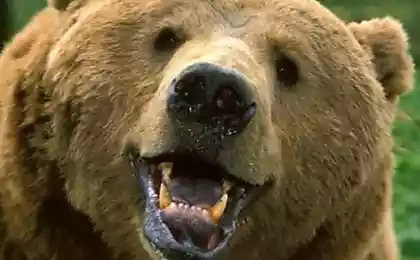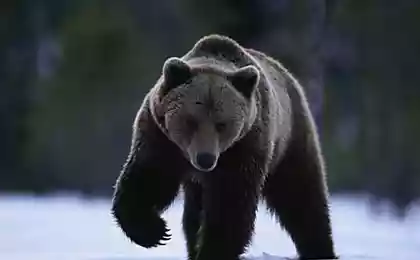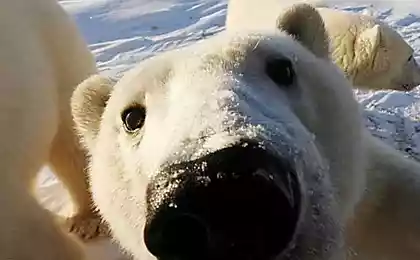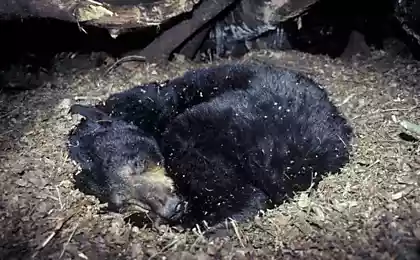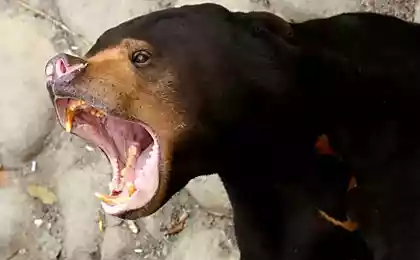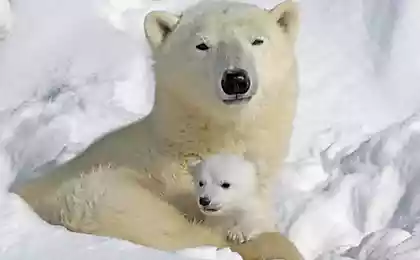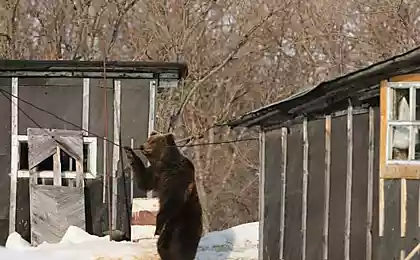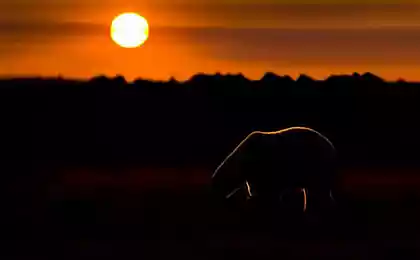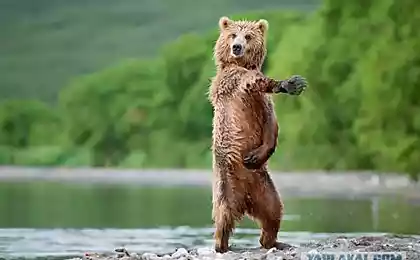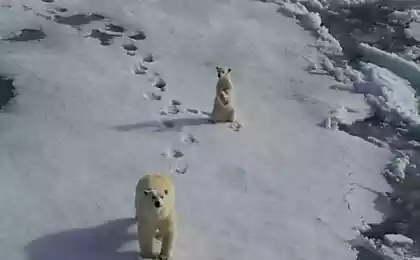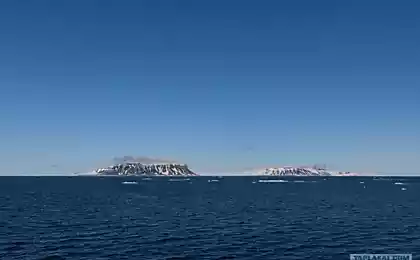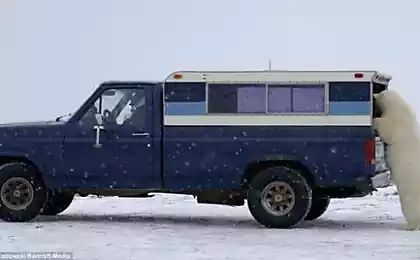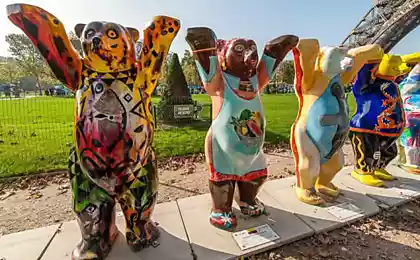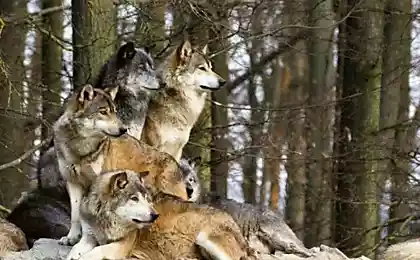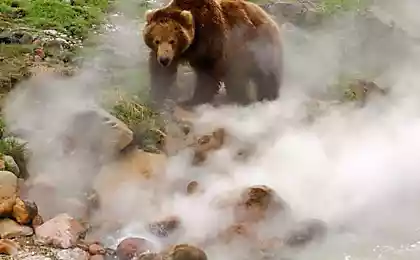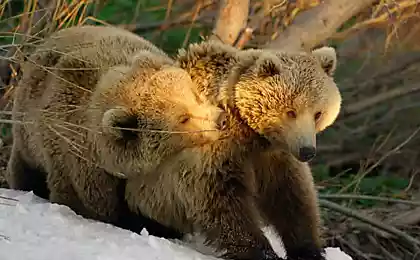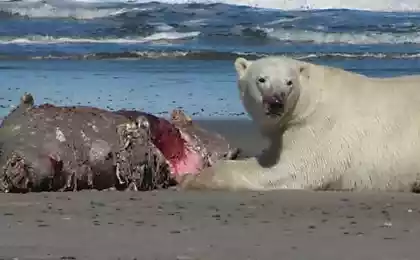652
Uzon Bears
He writes zoologist, researcher and blogger Igor Shpilenok:
Three days ago, back in the summer Bryansk Forest from a trip to Kamchatka in the Kronotsky Nature Reserve, which is still full of snow. It was my shortest Kamchatka trip - only 10 days in the field for three days in the Valley of the Geysers and a week in the caldera Uzon.
Path of the Valley of Geysers in Uzon remember. Fifteen kilometers away, I spent 13 hours! I met five bears. I specifically went out before dawn to catch the maximum distance to go before the sun melts the night crust. During the first two hours I climbed to the pass (about 5 km to climb 700 meters), but the pass was no crust. Further, where I was going, where crept, where rolled in the snow at a rate of approximately one km per hour. Under the scorching sun mercilessly. Especially hard the last kilometer was given already in the caldera. When I was floundering in the snow, I became interested in the bear, who decided that I was very bad and I should get there. But he, too, fell into the snow, and approached me with great difficulty. I have considered the poor man at close range: his eyes watered and he blinked painfully. Looks like the bright sun shining and the snow beast received burns of the retina, as often happens in people without sunglasses. Clicking the shutter of his senses, and he went on his way.
9 ph © Igor Shpilenok
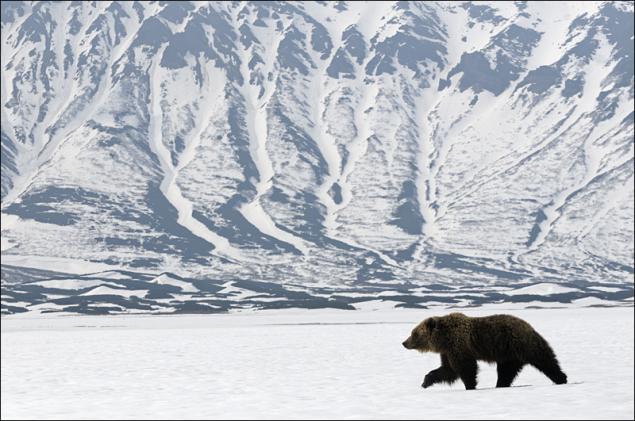
The caldera is full of shorebirds, ducks, ptarmigan. In thawed grazing clearly visible in his winter fur rabbits. New geyser discovered by employees of the reserve last year, continues to run, only to erupt, he became much less: about once every half hour. For more information about the caldera Uzon, I will talk about later, and the subject of today's post - Uzon bears. Who bears almost no available forages, and they go down to berlozhih mountains toward the ocean and flood plains of large rivers, where there grows grass first. So this time I was able to remove the mostly wandering in the background of the spring landscape animals.
Uzon Mountain - the highest part of the sides of a volcano caldera in spring is covered with a kind of graphic design.
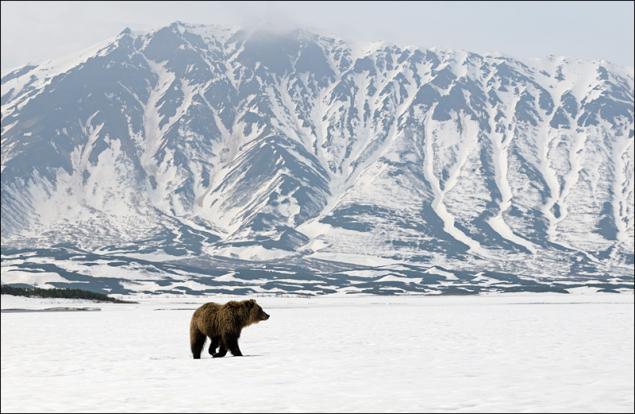
Approximately like this bear, falling through the rear, the front legs, I reached the hut at the caldera Uzon in deep snow.
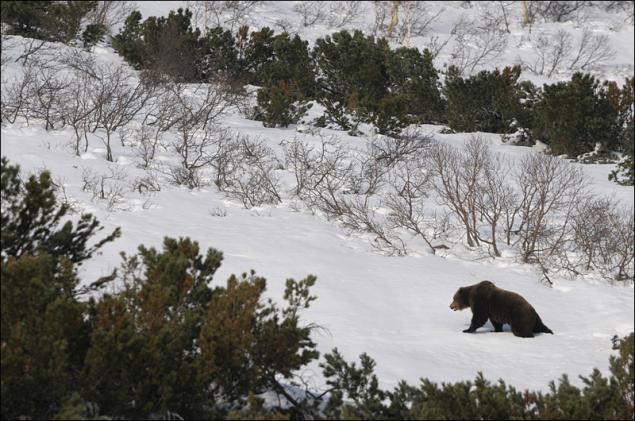
In this image, the caldera has a shadow, but in the background is illuminated by the evening sun top of the volcano zubchatki (Big Semyachik).
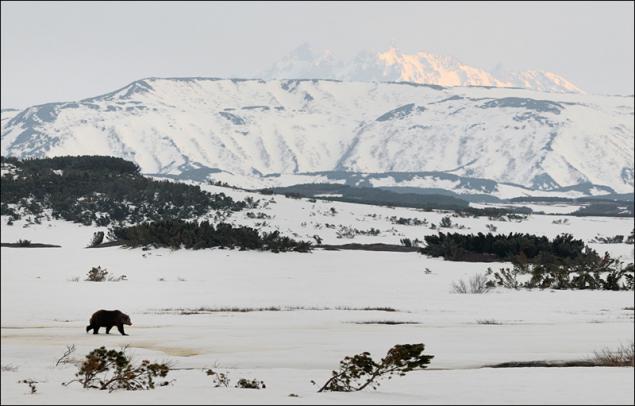
Mother with Lonchakov (melvezhonkom last year) looking for fresh grass on a warm warm volcanic soil region. In the background, over the side of the caldera, visible tip of the volcanic massif Semyachik.
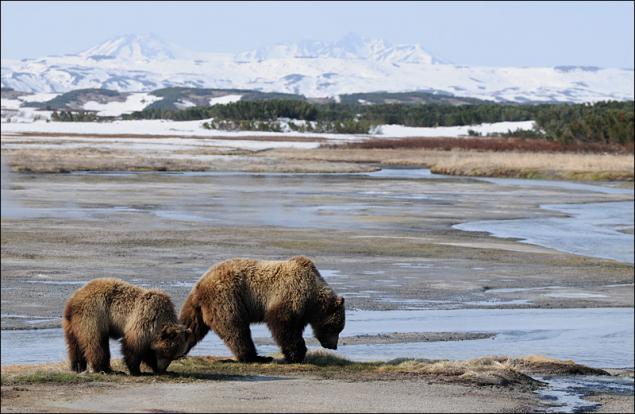
Thawed patches on the bottom of the caldera alternate with snowy areas, creating a spring atmosphere.
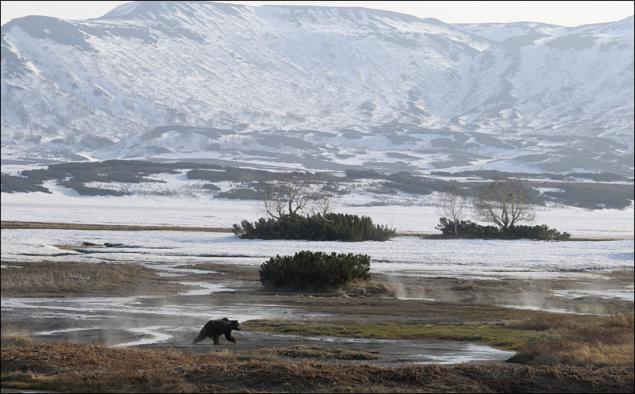
I was looking for how to make a picture of rhythmic bands cedar aboard the caldera, but the frame is not formed ... Line up the song helped who has come to the right place bear.
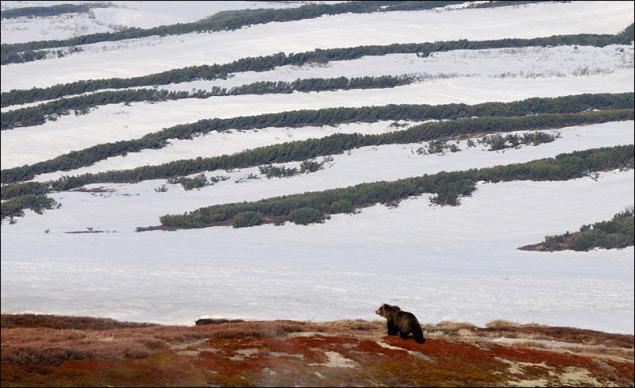
Bear footprints in the snow quickly blur and melt under the hot May sun.
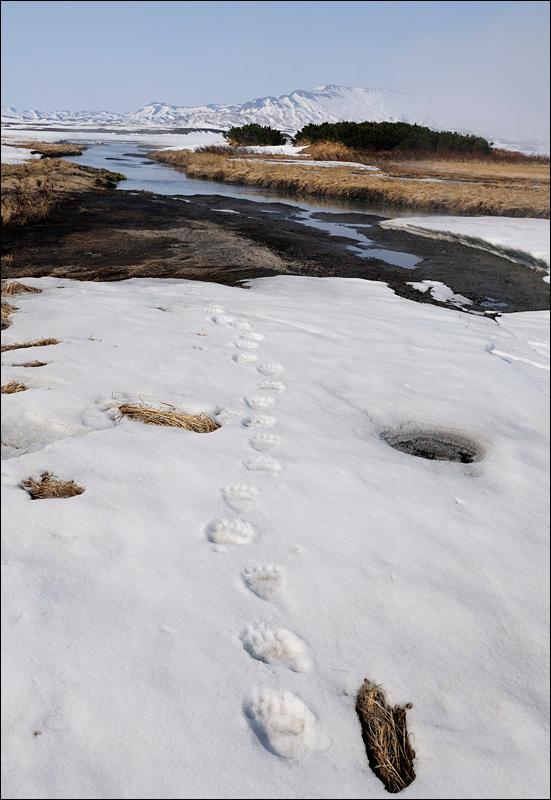
The male rubs against the tree withers and nadkusyvaet stone birch branches - so animals are registered in the local bear community.
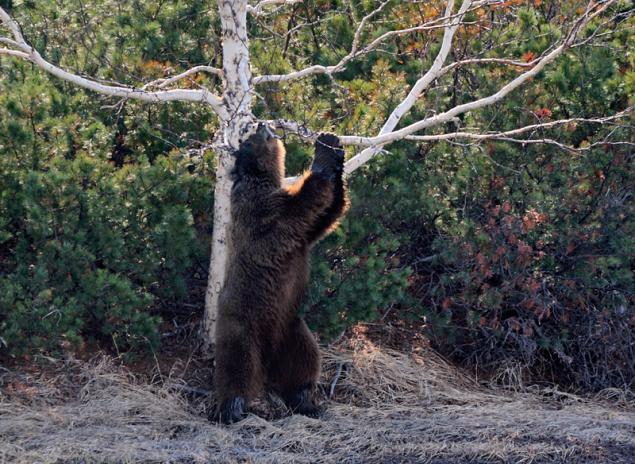
Source:
Three days ago, back in the summer Bryansk Forest from a trip to Kamchatka in the Kronotsky Nature Reserve, which is still full of snow. It was my shortest Kamchatka trip - only 10 days in the field for three days in the Valley of the Geysers and a week in the caldera Uzon.
Path of the Valley of Geysers in Uzon remember. Fifteen kilometers away, I spent 13 hours! I met five bears. I specifically went out before dawn to catch the maximum distance to go before the sun melts the night crust. During the first two hours I climbed to the pass (about 5 km to climb 700 meters), but the pass was no crust. Further, where I was going, where crept, where rolled in the snow at a rate of approximately one km per hour. Under the scorching sun mercilessly. Especially hard the last kilometer was given already in the caldera. When I was floundering in the snow, I became interested in the bear, who decided that I was very bad and I should get there. But he, too, fell into the snow, and approached me with great difficulty. I have considered the poor man at close range: his eyes watered and he blinked painfully. Looks like the bright sun shining and the snow beast received burns of the retina, as often happens in people without sunglasses. Clicking the shutter of his senses, and he went on his way.
9 ph © Igor Shpilenok

The caldera is full of shorebirds, ducks, ptarmigan. In thawed grazing clearly visible in his winter fur rabbits. New geyser discovered by employees of the reserve last year, continues to run, only to erupt, he became much less: about once every half hour. For more information about the caldera Uzon, I will talk about later, and the subject of today's post - Uzon bears. Who bears almost no available forages, and they go down to berlozhih mountains toward the ocean and flood plains of large rivers, where there grows grass first. So this time I was able to remove the mostly wandering in the background of the spring landscape animals.
Uzon Mountain - the highest part of the sides of a volcano caldera in spring is covered with a kind of graphic design.

Approximately like this bear, falling through the rear, the front legs, I reached the hut at the caldera Uzon in deep snow.

In this image, the caldera has a shadow, but in the background is illuminated by the evening sun top of the volcano zubchatki (Big Semyachik).

Mother with Lonchakov (melvezhonkom last year) looking for fresh grass on a warm warm volcanic soil region. In the background, over the side of the caldera, visible tip of the volcanic massif Semyachik.

Thawed patches on the bottom of the caldera alternate with snowy areas, creating a spring atmosphere.

I was looking for how to make a picture of rhythmic bands cedar aboard the caldera, but the frame is not formed ... Line up the song helped who has come to the right place bear.

Bear footprints in the snow quickly blur and melt under the hot May sun.

The male rubs against the tree withers and nadkusyvaet stone birch branches - so animals are registered in the local bear community.

Source:
